- Messages
- 9,258
- Edit My Images
- No
The important thing about "print quality" is that it's a personal opinion. There are no absolute standards and it's difficult to see how there could be.
Hi Peter B, yes I have had a look there and it actually got me connected with someone who does wetplate photography....that will be for further down the line....when I can afford a large format camera .
I must admit though that I am still exploring that site in more detail.

From my reading, I can't recall any recorded instances of either Ansel Adams or Edward Weston producing proper negatives either.
I don't disagree that there are occasions when you can get away with a straight print, and the aim should always be to produce negatives that require the minimum amount of work when printing them. But to repeat myself, I've never seen a negative that didn't benefit from some dodging and burning when printing it.Certainly a "fine quality print" can be produced by straight-printing a proper negative. And certainly producing a proper negative is "doable."
Ansel Adams book "The print" has several examples of straight prints with with those after dodging/burning as well as the effect of things like using different paper developers.I wonder if any straight prints from either are easily available for public viewing.
 erickimphotography.com
erickimphotography.com
If they are cheap enough, they are still useful even with digital. The discussions in the Negative, on how different shades of grey affect the emotional content of the print are interesting, as are the way filters effect the image.Found a copy of The Print in a charity shop via Amazon - should be with me next week. Thanks for the heads up. I'll keep an eye open for the other 2 in the series in local charity shops - they're rather less relevant (to me) these days but would be interesting should they turn up.
I wouldn't. Honestly. I might feel for you, though.@StephenM ......I am VERY tempted to take you up on that offer. I would be worried though that something could accidentally get damaged and I would feel awful about that.
Ah ha! I see where we disagree - please excuse my ignorance in assuming you were aware that there are many instances where the photographer has control over the subject and lighting - much nature, landscapes, portraiture, architecture, products, &c, &c.I've never seen a negative that didn't benefit from some dodging and burning when printing it.
Yes, indeed we will have to just disagree, as our experiences of the subjects you list, and our aspirations for making fine quality prints of those subjects, are obviously very different.Ah ha! I see where we disagree - please excuse my ignorance in assuming you were aware that there are many instances where the photographer has control over the subject and lighting - much nature, landscapes, portraiture, architecture, products, &c, &c.
...making fine quality prints of those subjects...
I find phrases like this to be a barrier to communication, when it comes to discussing any image. The use of such phrases implies an absolute scale of measurement. It was the rejection of such an approach to painting that (I think) moved Claude Monet to produce Impression, soleil levant and bootstrap the impressionist movement....can substantially improve
I don't believe it does imply an absolute scale of measurement. I would have thought that everyone will have a different concept of what "substantial" means. Isn't using a qualitative term like substantial implying the exact opposite of what you suggest.I find phrases like this to be a barrier to communication, when it comes to discussing any image. The use of such phrases implies an absolute scale of measurement. It was the rejection of such an approach to painting that (I think) moved Claude Monet to produce Impression, soleil levant and bootstrap the impressionist movement.
This is why I prefer to say that a particular image pleases me - or to say otherwise.
Use of the adjective "fine" implies some form of measurement.What absolute scale of measurement are you referring to?

I'm still not at all sure what any of this has to do with me saying I have leaned that dodging the edges of prints can substantially improve them, but the core message of your comment seems to be the same one we have discussed, and disagreed on before, so I will leave it there.Use of the adjective "fine" implies some form of measurement.
The derivation of the word is from the Latin "finis" via the French "fin" - both of which equate (generally) to the modern word "end" or possibly "boundary". Thus the phrase "fine quality" implies that the object is the ultimate or best of its kind and this in turn implies that a measurement of the quality has been performed and this is the result.
In a similar manner, "improve" is derived from the Latin "prodest" meaning "is of advantage" via the French "emprower" which had the meanings "make a profit" or "increase the value of" and subsequently "make greater" in amount or degree.
This is why I don't like the use of such terms in relation to images. Like (I believe) the Impressionists, I hold a simple opinion that all art is entirely in the eye of the beholder and there is no difference in kind or value between any two items. There can only be the effect that an image has on each individual viewer and therefor all opinions on the item are personal and in no way objective.
Of course, other opinions are available.
I'm simply pointing out that you're changing them but whether it "improves" them is a matter for each viewer to decide for themselves. That being the case: the decision to dodge or burn images has nothing to do with goodness but only with personal taste.I'm still not at all sure what any of this has to do with me saying I have leaned that dodging the edges of prints can substantially improve them
OK, I don't disagree with the sentiment, but I don't feel you have read my post(s) on this in the context of the post(s) I was replying to, which seemed to be suggesting that only people who weren't capable of making a "proper" negative needed to resort to dodging or burning.I'm simply pointing out that you're changing them but whether it "improves" them is a matter for each viewer to decide for themselves. That being the case: the decision to dodge or burn images has nothing to do with goodness but only with personal taste.
In my opinion, we have a duty to newcomers to point out that techniques which can be used to alter a "straight" print are not mandatory, may reduce the appeal of the image to viewers or may increase it.
And I still stand by what I said that "I" had never seen a negative that didn't benefit from some dodging or burning, even though there are occasions where a straight print may well be good enough.
?? I thought I made it clear that when the photographer has control of the lighting, subject and the processing, I don't believe further manipulation should be necessary. I will not insist upon it, however. Peace already!OK, I don't disagree with the sentiment, but I don't feel you have read my post(s) on this in the context of the post(s) I was replying to, which seemed to be suggesting that only people who weren't capable of making a "proper" negative needed to resort to dodging or burning.
Maybe you are just a better photographer than I am?? I thought I made it clear that when the photographer has control of the lighting, subject and the processing, I don't believe further manipulation should be necessary. I will not insist upon it, however. Peace already!
I can speak for my own negatives and for others. Working as part of a team of photographers I often printed negatives which weren't mine.I can only speak of my negatives, plus the few I've seen of others where they provided "straight" prints and their final prints. On that basis, I haven't seen a negative that printed straight to best effect. And I think (as someone said before me) that "good enough" is the enemy of the best.
You have your opinion and I have mine. I don't think we'll find common ground on this issue.And I still stand by what I said that "I" had never seen a negative that didn't benefit from some dodging or burning, even though there are occasions where a straight print may well be good enough.
If I'm the better photographer, you ought to give it up! Exposure and focus is simple enough for what I do, and the way I do it, but that's about it.Maybe you are just a better photographer than I am
Had to think a bit about this (not an easy task!) That's not the way I see it. You want to add the effect when printing, I prefer to do it before releasing the shutter. So long as we each reach our goal, does it really matter?Though it looks as if we are disagreeing over the subtleties of "necessary" and "desirable"
I'm all for people making their own photographs in the way they want to make them, and encourage it. But because of something you have now said, I feel like expanding on what I said earlier. Which I now realise is much more complicated to explain than I thought :-(Had to think a bit about this (not an easy task!) That's not the way I see it. You want to add the effect when printing, I prefer to do it before releasing the shutter. So long as we each reach our goal, does it really matter?
At least we don't disagree on everythingYou have your opinion and I have mine. I don't think we'll find common ground on this issue.
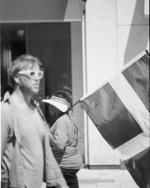

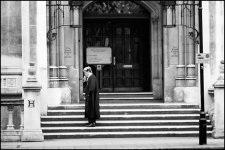
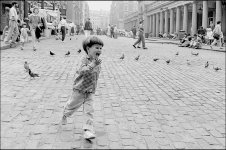
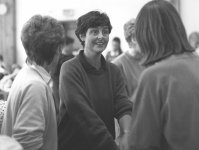
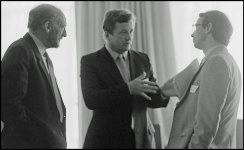
Sorry, I missed this, Try the following text into Google - if you get the same results I did you should find an interesting example of before and after.I wonder if any straight prints from either are easily available for public viewing.
I may just be repeating what is in the video, but with Moonrise, Hernandez, as you say, Adams couldn't find his meter so based the exposure on the known luminance of the moon 250 candles per sq ft.@StephenM I am sure there is a YouTube video about that image of moonrise over hernandez. If I remember rightly it suggests that he was driving along and saw the image, but realised that the light was fading fast and took the shot with the intention of getting the contrast post......it was an interesting documentary. I will see if I can find the link.
(edit...my memory didn't serve me well....it was about exposing without a lightmeter rather than intending to correct post)
I'm all for people making their own photographs in the way they want to make them, and encourage it. But because of something you have now said, I feel like expanding on what I said earlier. Which I now realise is much more complicated to explain than I thought :-(
You said
"...many instances where the photographer has control over the subject and lighting - much nature, landscapes, portraiture, architecture, products, &c, &c."
I responded to suggest you had to be a better photographer than I am, because the refinements at the printing stage available from dodging and burning are "normally" too subtle for me to have even been aware of at the taking stage. So I don't see dodging and burning as adding an effect I could have chosen to add at the taking stage.
I see the taking, the developing and the printing (or digital processing) as a single unified process for making photographs With my understanding of the processing side (its strengths and weaknesses) informing the taking side. On occasions I will make decisions at the taking stage that involve anticipating some dodging and burning, but only for minor corrections.
For example, in a woodland shot where the best exposure to retain important shadow and highlight detail means some of the mid-tone tree trunks are likely to come out darker than I want them to (e.g. poor separation from the background) I will fall back on knowing I can lift these tones a little with some dodging during processing. I fairly regularly use a hand held spotmeter, to help with estimating tonal characteristics but in practice this type of issue may only come to light when I am analysing the image at the printing stage, and dodging or burning are my only option.
Another example, from the dark and distant days when people came into our studio for passport photographs, we had a standard set up so most people in the studio/shop could do the actual taking, and the most junior person would do the printing (which at one time was me) but everyone was taught to give a tiny bit of dodging or burning to make sure there was a little more detail brought out in the hair or/and people's beards. You could argue that this is an example where we should have got it right in camera, and adjusted lighting and exposure for every person, but in practice, it was more efficient and cost effective to rely on the tiny bit of dodging and burning required.
As the tonal range of film and digital is (normally) greater than the print, I am primarily working to make sure I capture as much information as possible on the film or file, at the taking stage, so I have maximum flexibility at the printing stage. If you don't get this bit right, then dodging and burning isn't going to be of much value.
I'm not sure what it is you disagree with about the necessary and desirable, the "necessary" part is getting it as good as you can get it in camera, the 'desirable' bit is refining it during processing to better match the intent and vision you had when you took it.
Which brings me back to how good a photographer one might be and that I don't have the skills, at the taking stage, to fully achieve the level of refinement I want in the final image, without some dodging and burning.
I'm interested in how you would tackle my woodland example.
If you are using slide film, for a limited subject range, and have the option of simply not taking the picture then it's really a different discussion.Briefly, if I cannot compose and expose as I want, I'll look for another subject. I use reflectors and electronic flash a lot. I mostly shoot color slides, and avoid bright sunlight – if it's not overcast I'm in the woods in the shade where the light is more even. I also don't photograph many wide or deep scenes, usually smaller detailed single subjects, which is probably what I would do with your woodland example.
Time constraints and someone choosing my subjects are the very reasons I've had no interest in going pro.If you are using slide film, for a limited subject range, and have the option of simply not taking the picture then it's really a different discussion.
I have been talking about making prints where dodging and burning is used to allow detail recorded in the negative or digital file to be reproduced in the print.
All the things you have described are still needed before you get to the dodging and burning stage, because you still need a well exposed, well lit negative/file as a starting point. And I'm not saying every print needs dodging and burning, just that it’s a valuable creative tool and as I've said, I've never made a print where I didn't think it benefited from dodging and burning.
Much of what you describe is very similar my own approach, though as a professional photographer I didn't have the luxury of simply not taking a picture. And now a days I will often bracket digital files and merge them in Photoshop to extend the tonal range I can capture at the taking stage. I used to do the same with film for estate agent photographs, but its so much easier with digital.
The tree example was meant to illustrate subtle and localised tonal or colour ranges within a scene, which normally I wouldn't even notice at the taking stage, would be difficult to adjust for at the taking stage (probably impossible in the outdoor situations I'm thinking of) but become noticeable at the printing stage where they can be corrected through dodging or burning.
I think, with printing (or even posting online) there are two key assessment stages The first one where the aim is to get the best possible negative or digital file, and the second one where the aim is to get the best possible print from that negative or digital file.
But we are starting to go round in circles so maybe we should just end it here.
